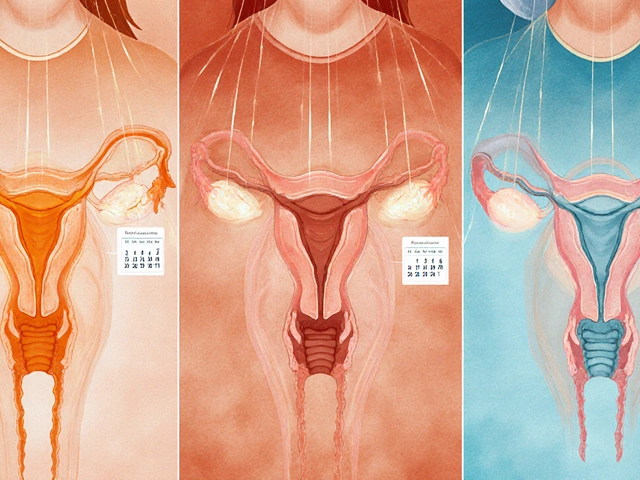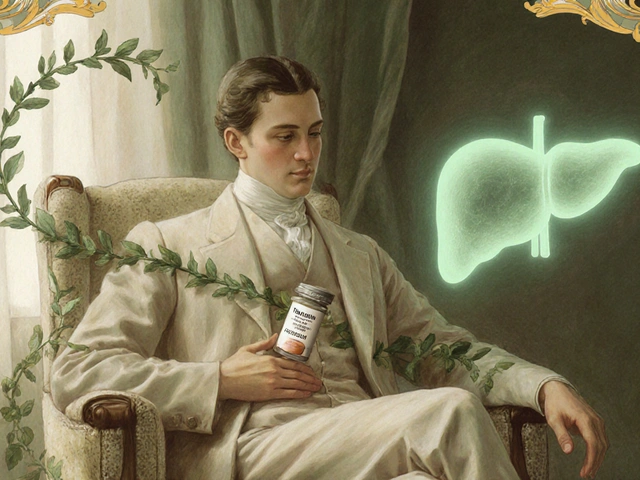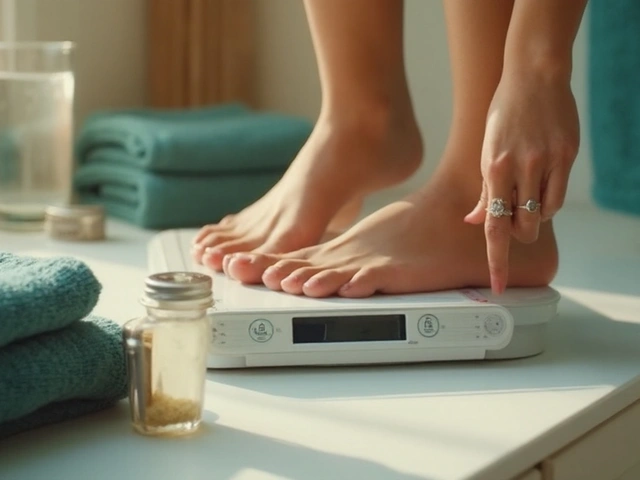Bacterial eye infection is a ocular infection that occurs when pathogenic bacteria invade the surface or internal structures of the eye. It can affect the conjunctiva, cornea, eyelids, or tear ducts, leading to pain, redness, and vision problems.
Quick Take
- Most common bacterial culprits: Staphylococcus aureus, Streptococcus pneumoniae, Haemophilus influenzae, and Pseudomonas aeruginosa.
- Key symptoms include redness, discharge, swelling, tearing, and sensitivity to light.
- Diagnosis is usually clinical, sometimes confirmed by swab culture.
- First‑line treatment: topical antibiotics; severe cases may need oral medication.
- Good hygiene and prompt care prevent spread and complications.
What Is a Bacterial Eye Infection?
In simple terms, a bacterial eye infection is an invasion of the eye’s tissues by bacteria that multiply faster than the eye’s natural defenses can handle. While viruses and allergens can also cause eye irritation, bacterial forms tend to produce thicker, often yellow‑green discharge and respond well to antibiotics.
Common Bacterial Culprits
Understanding the typical pathogens helps clinicians pick the right drug and patients to recognize risk factors.
Staphylococcus aureus is a gram‑positive cocci that commonly lives on skin and can cause conjunctivitis, blepharitis, and keratitis, especially after contact‑lens wear.
Streptococcus pneumoniae is a gram‑positive diplococcus known for causing acute bacterial conjunctivitis in children and adults, often after an upper‑respiratory infection.
Haemophilus influenzae is a small gram‑negative rod that thrives in the nasopharynx and can spread to the eye, frequently presenting as mild conjunctivitis with watery discharge.
Pseudomonas aeruginosa is a gram‑negative bacillus associated with contact‑lens‑related keratitis, notorious for rapid corneal destruction if untreated.
Pathogen Comparison
| Pathogen | Typical Presentation | Risk Factors | First‑line Treatment |
|---|---|---|---|
| Staphylococcus aureus | Redness, purulent discharge, eyelid crusting | Contact lens use, skin colonisation | Topical erythromycin or fluoroquinolone |
| Streptococcus pneumoniae | d>Thick yellow discharge, eyelid swellingRecent respiratory infection, crowded environments | Topical macrolide or fluoroquinolone | |
| Haemophilus influenzae | Watery or mucous discharge, mild irritation | Childhood, day‑care attendance | Topical trimethoprim‑polymyxin B |
| Pseudomonas aeruginosa | Severe pain, corneal ulceration, rapid vision loss | Improper lens hygiene, trauma | Topical fortified tobramycin or ciprofloxacin |
Recognising the Symptoms
Early identification can stop an infection from spreading to the cornea, where permanent damage is possible. Typical signs include:
- Redness of the white part (sclera) or inner eyelid.
- Thick, coloured discharge that may crust overnight.
- Itching or burning sensation.
- Excess tearing or a gritty feeling.
- Photophobia - discomfort in bright light.
- Blurred vision if the cornea becomes involved.
Children often rub their eyes, making it harder to spot subtle changes. If you notice any of these signs persisting beyond 24‑48 hours, consider professional evaluation.
How Doctors Diagnose the Infection
Most cases are diagnosed via a straightforward eye exam. The clinician will:
- Inspect the eye with a slit‑lamp or magnifying loupe.
- Take a sample of the discharge using a sterile swab.
- Send the swab to a microbiology lab for culture and sensitivity testing - especially for severe or atypical cases.
Culture results identify the exact species and its antibiotic susceptibility, allowing targeted therapy. In routine cases, empirical treatment based on the most common pathogens is acceptable.

Treatment Options
Because the eye is a delicate organ, treatment prioritises rapid bacterial eradication while preserving ocular surface health.
Topical Antibiotics
Eye drops or ointments are the mainstay. Common agents include:
- Fluoroquinolones (e.g., ciprofloxacin, moxifloxacin) - broad spectrum, good for contact‑lens‑related infections.
- Macrolides (e.g., azithromycin) - convenient dosing, effective against S. aureus and S. pneumoniae.
- Polymyxin‑B/trimethoprim - useful for H. influenzae.
Typically, drops are applied every 1-2 hours while awake for the first 48hours, then tapered over 5-7days.
Oral Antibiotics
Systemic therapy is reserved for:
- Severe keratitis or deep stromal involvement.
- Spread beyond the conjunctiva (e.g., orbital cellulitis).
- Patients unable to tolerate drops.
Drugs such as amoxicillin‑clavulanate or doxycycline are common choices, guided by culture results.
Adjunctive Care
Supportive measures improve comfort and healing:
- Warm compresses help loosen crusted discharge and stimulate tear flow.
- Lid hygiene with diluted baby shampoo or commercial wipes reduces bacterial load on the eyelid margin.
- Avoiding contact lens wear until the infection clears prevents re‑contamination.
Preventive Measures
Most bacterial eye infections are preventable with simple habits:
- Wash hands thoroughly before touching eyes or handling lenses.
- Replace contact lens cases every three months and disinfect lenses daily.
- Never share eye cosmetics or towels.
- Seek prompt care for upper‑respiratory infections; they can seed the eye.
Related Conditions and When to Seek Urgent Care
While many infections resolve with outpatient therapy, certain red flags demand immediate attention:
- Sudden, severe pain or vision loss - possible corneal ulcer.
- Swelling that extends beyond the eyelid (pre‑septal cellulitis).
- Fever, headache, or eye movement pain - could signal orbital cellulitis.
These scenarios may require intravenous antibiotics, hospital admission, or specialist referral.
Next Steps for Readers
If you suspect a bacterial eye infection, start by cleaning any crusted discharge, avoid rubbing, and book an appointment with an ophthalmologist or optometrist. Keep a record of symptoms, recent illnesses, and any lens‑wear habits - it will help the clinician pinpoint the cause faster.
Frequently Asked Questions
Can a bacterial eye infection turn into a serious condition?
Yes. If the bacteria invade the cornea, they can cause a ulcer that damages vision permanently. Prompt treatment usually prevents this, but untreated infections may spread to surrounding tissue and lead to orbital cellulitis.
How long does it take for symptoms to improve after starting antibiotics?
Most patients notice reduced redness and discharge within 24‑48hours. Complete resolution generally takes 5‑7days of consistent therapy.
Are over‑the‑counter eye drops effective for bacterial infections?
OTC artificial tears or antihistamine drops only soothe symptoms. They do not kill bacteria, so a prescription antibiotic is required for an actual infection.
Can I wear contact lenses while on treatment?
Generally, no. Lenses can trap bacteria and delay healing. Switch to glasses until the eye is clear for at least 24‑48hours after finishing drops.
What home care helps speed recovery?
Apply warm compresses 3‑4 times a day, practice diligent lid hygiene, avoid eye makeup, and keep hands clean. Continue using prescribed drops exactly as directed, even if symptoms fade quickly.
When should I see a doctor instead of waiting?
If you develop intense pain, sudden vision change, swelling beyond the eyelid, fever, or symptoms persist beyond three days, seek professional care immediately.







Leah Beazy
September 25, 2025 AT 03:21I got a bacterial eye infection last winter after forgetting to clean my contacts. Thought it was just allergies until my eyelids stuck shut in the morning. Topical drops saved me, but wow, that first 48 hours were rough. Don't mess around with this stuff.
John Villamayor
September 26, 2025 AT 04:15Staph is everywhere man I mean literally everywhere. I wear contacts daily and never had an issue until I slept in them after a party. Pseudomonas is scary stuff. One night and my cornea looked like it was melting. Hospital next day.
Jenna Hobbs
September 26, 2025 AT 15:14YALL. I just wanna say if you're reading this and you're scared about an eye infection-YOU GOT THIS. I had a nasty case from my toddler sneezing on my pillow. Warm compresses + prescribed drops + zero eye makeup = 5 days to recovery. You're stronger than you think. 💪👁️
Ophelia Q
September 28, 2025 AT 15:10Just wanted to add-never use tap water to clean your contacts. Ever. I learned this the hard way after my friend told me to rinse them with water because she "didn't have solution." Ended up with Pseudomonas. ICU level scary. 🚨 Use only sterile saline or solution. Your eyes will thank you.
Elliott Jackson
September 30, 2025 AT 14:51Okay but why is everyone acting like this is some rare medical mystery? This is basic microbiology. If you don't wash your hands before touching your face, you're asking for trouble. Also, OTC drops? Please. That's like putting a bandaid on a broken leg.
McKayla Carda
October 1, 2025 AT 19:37My kid got Haemophilus from daycare. Watery discharge, no fever, just annoying. Trimethoprim-polymyxin B worked like magic in 3 days. Pro tip: wipe from inner to outer eye with a fresh cotton ball each time.
Christopher Ramsbottom-Isherwood
October 2, 2025 AT 20:50Let me guess-this article was written by someone who’s never had a real eye infection. Staph isn’t the main culprit in adults. It’s Moraxella. And Pseudomonas doesn’t just come from contacts-it’s from swimming pools, hot tubs, even shower heads. You’re oversimplifying
Stacy Reed
October 3, 2025 AT 06:41I wonder if this is all just a capitalist ploy to sell antibiotics. Like, what if our immune systems just need to be trusted more? Maybe we’re overtreating these infections because we’ve lost faith in natural healing. 🤔
Robert Gallagher
October 4, 2025 AT 00:37My uncle had orbital cellulitis after ignoring a red eye for a week. Got admitted. IV antibiotics. Stayed 5 days. Now he wears glasses and never touches his eyes without washing his hands first. So yeah. Don’t be that guy. This isn’t a joke. It’s not "just red eyes."
Howard Lee
October 5, 2025 AT 13:33It's important to note that fluoroquinolones are not always first-line for children due to potential cartilage effects. Macrolides are preferred in pediatric cases. Also, culture sensitivity is critical in recurrent infections. Precision matters.
Nicole Carpentier
October 5, 2025 AT 15:17Just finished my drops. Eye feels 100%. Warm compresses were the secret weapon. I did it 4x a day with a clean washcloth. Felt like a spa day for my eyeballs. 🌿👁️ Also-no makeup for a week. Worth it.